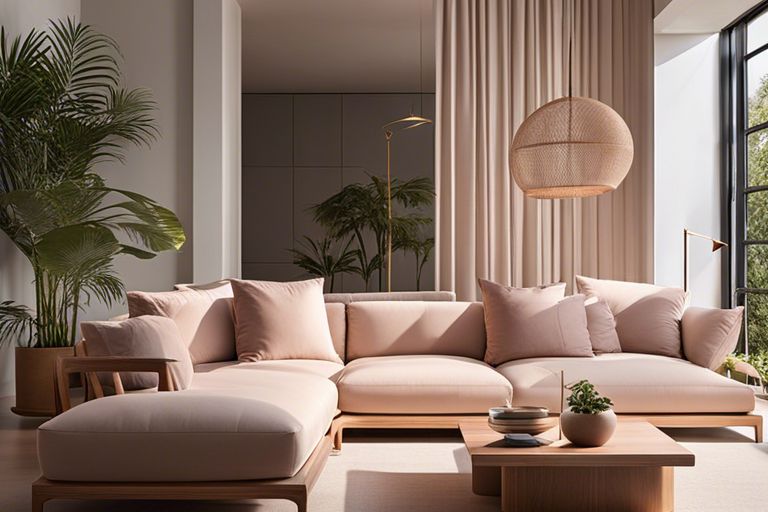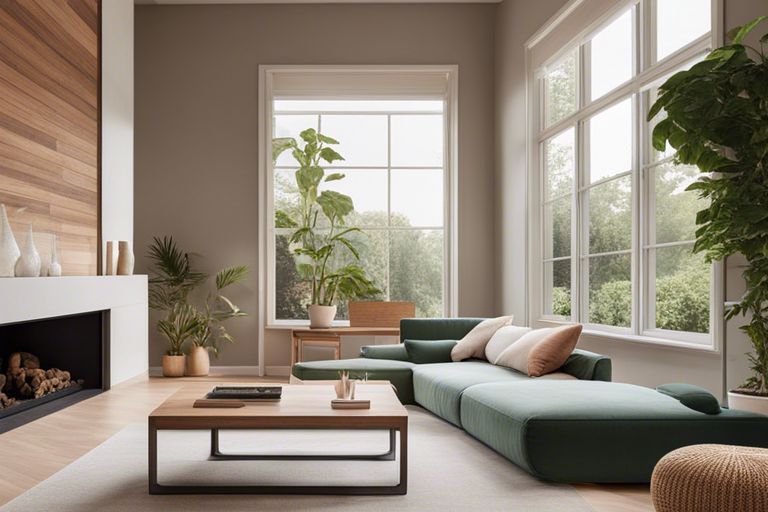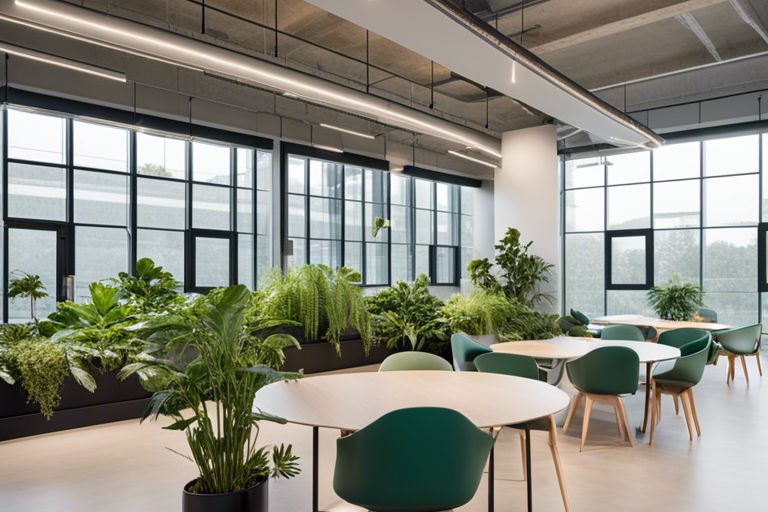There’s a deep yearning within you to reconnect with nature, to bring its calming and rejuvenating effects into your everyday life. By incorporating biophilic design principles into your home, you can create a space that not only looks beautiful but also enhances your well-being. Let’s explore how you can embrace biophilic design in your home to foster a stronger bond with the natural world, inspired by the wisdom of Henry David Thoreau.
Key Takeaways:
- Embrace Biophilic Design: Incorporate elements like natural light, indoor plants, and natural materials to bring the outdoors inside your home.
- Create Nature-Inspired Spaces: Design areas in your home that mimic natural environments, such as a cozy reading nook with a view of the garden or a water feature for a calming ambiance.
- Prioritize Green Building Practices: Choose sustainable materials, energy-efficient fixtures, and incorporate green spaces like rooftop gardens or living walls to enhance your connection with nature.
Henry David Thoreau once said, “I went to the woods because I wished to live deliberately, to front only the imperative facts of life, and see if I could not learn what it had to teach, and not, when I came to die, discover that I had not lived.” Embracing biophilic design principles in your home can bring you closer to nature and create a space that nurtures your soul.
The Importance of Biophilic Design
A connection with nature is important for your well-being. Incorporating biophilic design principles in your home can help you establish and maintain this vital connection. By bringing elements of nature into your living space, you can create a sense of harmony and tranquility that is beneficial for your overall health.
The Human-Nature Connection
Importance: Humans have an innate connection with nature, known as biophilia, which is crucial for our mental and physical well-being. Being surrounded by nature has a calming effect on your mind and body, reducing stress and promoting a sense of relaxation. By incorporating natural elements such as plants, natural light, and water features into your home, you can enhance this connection and improve your quality of life.
Benefits of Biophilic Design for Mental and Physical Health
Physical: Biophilic design has been shown to have numerous benefits for your mental and physical health. Studies have found that exposure to nature, even in urban environments, can help lower blood pressure, reduce anxiety and depression, and improve cognitive function. By incorporating nature-inspired elements in your home, such as organic shapes, natural materials, and views of the outdoors, you can create a space that promotes health and well-being.
Plus: In addition to the mental and physical health benefits, biophilic design can also enhance your mood and productivity. Natural elements in your home can help you feel more connected to the environment and inspire a sense of wonder and creativity. By designing your living space with biophilia in mind, you can create a sanctuary that nourishes your body, mind, and spirit.
Incorporating Natural Elements
Now, let’s explore how you can incorporate natural elements into your home to enhance your connection with nature.
Bringing the Outdoors In: Plants and Green Walls
Plants are an vital element of biophilic design. They not only add a touch of greenery to your space but also help improve air quality and create a calming atmosphere. Consider adding a variety of indoor plants such as succulents, ferns, or flowering plants to different rooms in your home. For a more immersive experience, you can also opt for green walls that cover entire sections of your walls with lush vegetation, bringing a piece of nature indoors.
Natural Light and Ventilation
The presence of natural light and ventilation is crucial in biophilic design. Ensure that your home has ample windows to allow natural sunlight to stream in during the day. This not only helps to reduce your reliance on artificial lighting but also has a positive impact on your mood and well-being. Additionally, proper ventilation allows fresh air to circulate, creating a healthier indoor environment for you to enjoy.
Water Features and Aquatic Elements
Plants aren’t the only natural elements you can incorporate into your home. Water features such as indoor fountains, aquariums, or even a small pond can help create a sense of tranquility and connection to nature. The sight and sound of flowing water can have a calming effect on your mind, promoting relaxation and reducing stress levels.

Materials and Textures
Sustainable and Recycled Materials
For a more sustainable approach to biophilic design in your home, consider incorporating sustainable and recycled materials into your space. Using materials such as reclaimed wood, recycled glass, or repurposed metals not only adds a unique touch to your decor but also helps reduce environmental impact. By choosing these materials, you can contribute to the conservation of natural resources and minimize waste production in your home design.
Natural Textures: Wood, Stone, and Bamboo
Materials like wood, stone, and bamboo can bring a natural, organic feel to your living spaces, creating a sense of tranquility and connection with the outdoors. Wood adds warmth and character, while stone and bamboo offer durability and a timeless aesthetic. Incorporating these natural textures into your home design can evoke a sense of grounding and harmony with nature.
Materials such as wood, stone, and bamboo not only enhance the visual appeal of your home but also provide tactile experiences that can stimulate your senses and create a calming atmosphere in your living spaces. By incorporating these natural elements into your decor, you can embrace the beauty of the natural world right in your own home.
Earthy Colors and Patterns
Pertaining to infusing biophilic design principles into your home, earthy colors and patterns play a key role in creating a harmonious connection with nature. Wood tones, greens, browns, and earthy hues can bring the outdoors inside and create a sense of balance and tranquility in your living spaces.
It is important to incorporate these natural colors and patterns strategically throughout your home to maintain a cohesive and nature-inspired design. By selecting textiles, rugs, and decor items that reflect these earthy tones and motifs, you can enhance the biophilic qualities of your living environment and foster a deeper connection with nature.
Spatial Design and Layout
Open Spaces and Flowing Transitions
Spaces in your home that flow seamlessly into one another can create a sense of openness and connection to nature. Keep the layout simple and uncluttered to allow for easy movement between rooms. Consider using elements like sliding doors or large windows to blur the lines between indoor and outdoor spaces.
Creating Visual Connections to Nature
An emphasis on incorporating natural elements into your interior design can help bring the outdoors in. Use materials like wood, stone, and plants to create a cohesive look that reminds you of the natural world. Consider positioning furniture to face windows with views of trees or greenery to enhance the connection to nature.
Nature has a profound impact on our well-being, and incorporating natural elements into your home can have a calming effect. By strategically placing mirrors to reflect outdoor views or incorporating nature-inspired art and decor, you can amplify the sense of being surrounded by nature even when inside.
Balancing Functionality and Aesthetics
The key to successful biophilic design in your home lies in finding a balance between functionality and aesthetics. Choose furniture and decor that not only look good but also serve a purpose. Opt for multifunctional pieces that enhance the overall design while meeting your practical needs.
Design your space with a focus on sustainability by selecting eco-friendly materials and incorporating elements that promote energy efficiency. This not only benefits the environment but also creates a healthier living environment for you and your family.
Biophilic Design in Practice
To truly embrace biophilic design principles in your home, you can look to various examples of homes and buildings that have successfully integrated nature into their design. These spaces often incorporate natural elements such as large windows allowing for ample natural light, green walls covered in vegetation, and indoor water features like ponds or fountains. By bringing these elements into your living space, you can enhance your connection with nature and create a more harmonious environment.
Examples of Biophilic Homes and Buildings
On the cutting edge of architecture, there are incredible examples of biophilic design that showcase the beauty and benefits of incorporating nature into the built environment. From treehouse-inspired homes nestled amongst the trees to office buildings with sprawling rooftop gardens, these spaces not only look stunning but also provide a healthier and more sustainable living environment for their occupants.
Interviews with Biophilic Design Experts
Any exploration of biophilic design would be incomplete without insights from experts in the field. Interviewing architects, interior designers, and sustainability advocates who specialize in biophilic design can provide valuable perspectives and tips on how to incorporate these principles into your own space. Discovering the thought processes and inspirations behind their designs can help you gain a deeper understanding of how to create a more nature-inspired home.
To gain more insights into the world of biophilic design, consider interviewing experts who can share their experiences and expertise. These conversations can offer valuable guidance and inspiration as you initiate on your biophilic design journey.
DIY Biophilic Design Projects for Your Home
To infuse your home with biophilic design elements, consider engaging in DIY projects that bring nature indoors. From creating a living plant wall to building a bird sanctuary in your backyard, there are countless ways to incorporate nature into your living space. These hands-on projects not only allow you to express your creativity but also help you connect more deeply with the natural world around you.
On your quest to infuse your home with biophilic design elements, consider starting with some simple DIY projects. Enhancing your living space with natural materials, plants, and earthy colors can create a calming and rejuvenating atmosphere that resonates with the principles of biophilic design.
Overcoming Challenges and Limitations
Not every home is designed with biophilic principles from the start, but that doesn’t mean you can’t incorporate them. To learn more about how to overcome challenges in integrating biophilic design elements into your home, check out The Magic of Biophilic Design: Bringing Nature Indoors for ….
Addressing Space and Budget Constraints
Constraints such as limited space or a tight budget can make it seem daunting to introduce biophilic elements into your home. However, there are ways to work around these limitations. Start by incorporating smaller elements like potted plants, natural materials, or nature-inspired artwork. These additions can still have a significant impact on your connection with nature without requiring a large investment or extensive space.
Integrating Biophilic Design with Existing Architecture
Overcoming the challenges of integrating biophilic design with existing architecture may seem tricky, but it is not impossible. Look for opportunities to introduce natural elements such as wood accents, green walls, or water features that complement the existing structure. By carefully selecting and placing biophilic elements, you can create a harmonious blend of nature and design in your space.
Maintaining and Upkeeping Biophilic Elements
Maintaining the biophilic elements in your home is necessary to ensure they continue to provide their benefits. Regularly water and care for your plants, clean natural materials, and adjust lighting to mimic natural patterns. By taking the time to preserve these elements, you can continue to enjoy the positive effects of biophilic design in your living environment.
To enhance your connection with nature through biophilic design, remember that overcoming challenges, integrating with existing architecture, and maintaining elements are all part of the process. Embrace the opportunity to bring the outdoors in, and watch as your home transforms into a sanctuary of tranquility and well-being.
To wrap up
Now that you have learned about biophilic design principles and how they can enhance your connection with nature within your home, you have the knowledge to create a space that truly brings the outdoors in. By incorporating elements such as natural light, indoor plants, and natural materials, you can create a peaceful and rejuvenating environment that promotes well-being and harmony.
Recall, connecting with nature is necessary for our physical and mental health, and by incorporating biophilic design into your home, you are taking a step towards living a more balanced and fulfilling life. So, embrace nature within your living spaces and experience the benefits of a biophilic home for yourself.
FAQ
Q: What is biophilic design?
A: Biophilic design is an innovative approach that incorporates elements of nature into our built environments to create spaces that enhance our connection with nature. It aims to improve our well-being, productivity, and overall quality of life by integrating natural elements like plants, natural light, and water into architecture and interiors.
Q: How can I incorporate biophilic design principles into my home?
A: There are many ways to incorporate biophilic design principles into your home. You can start by bringing in indoor plants to improve air quality and create a sense of calm. You can also maximize natural light by using large windows and skylights, or by using mirrors to reflect light into darker spaces. Additionally, you can introduce natural materials like wood, stone, and water features to add texture and create a connection to the outdoors.
Q: What are the benefits of incorporating biophilic design into my home?
A: Incorporating biophilic design into your home can have numerous benefits for your well-being and overall quality of life. It can reduce stress, improve productivity, and boost creativity. Biophilic design can also help to create a sense of harmony and balance in your living space, promoting relaxation and a deeper connection with the natural world.



